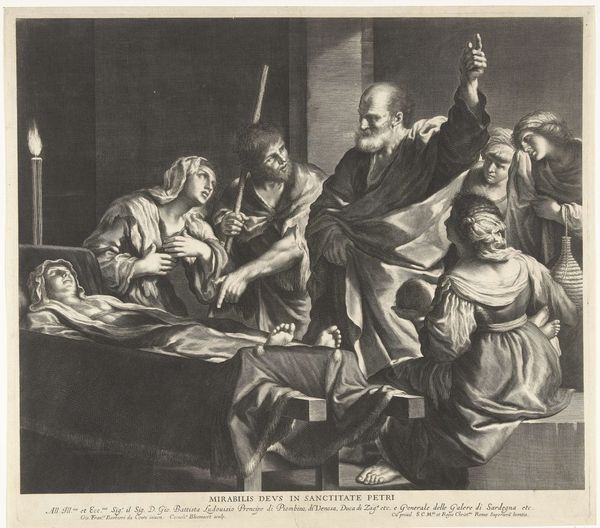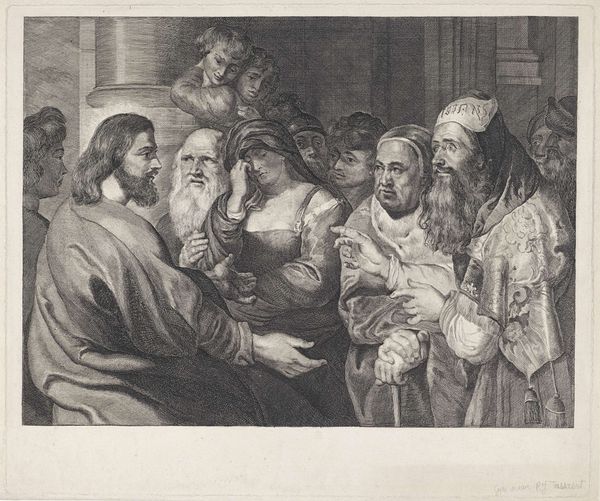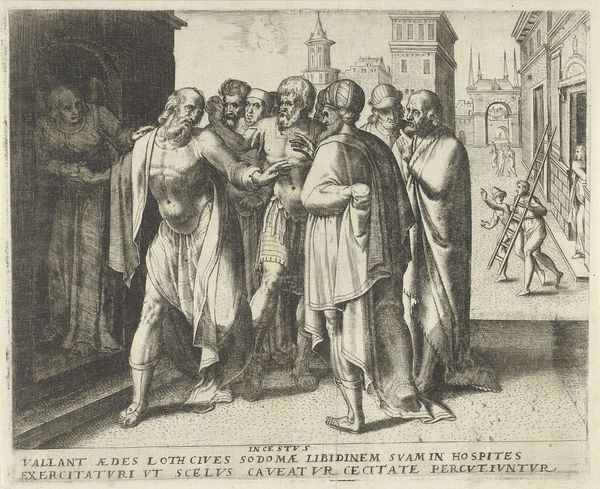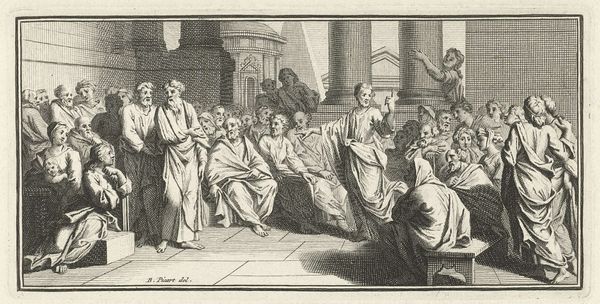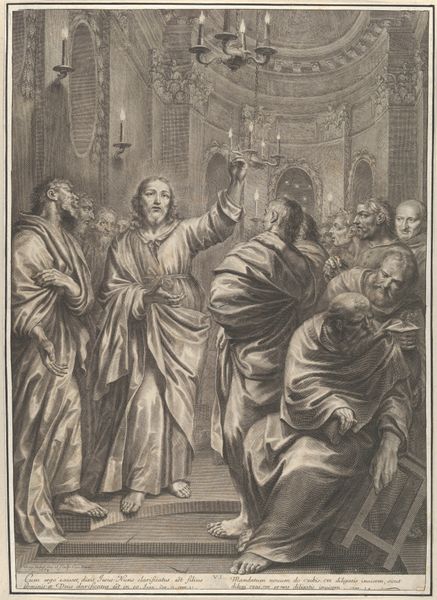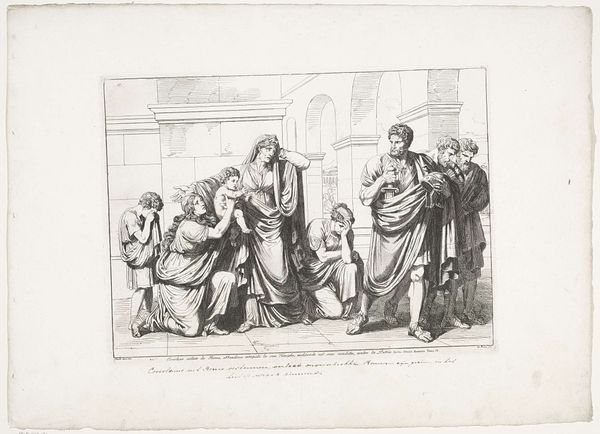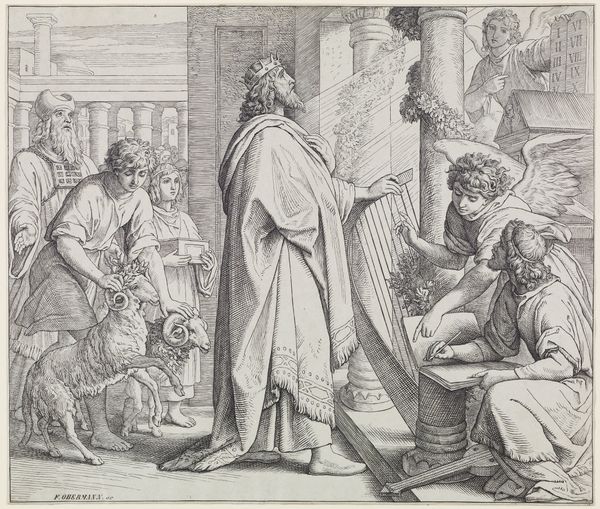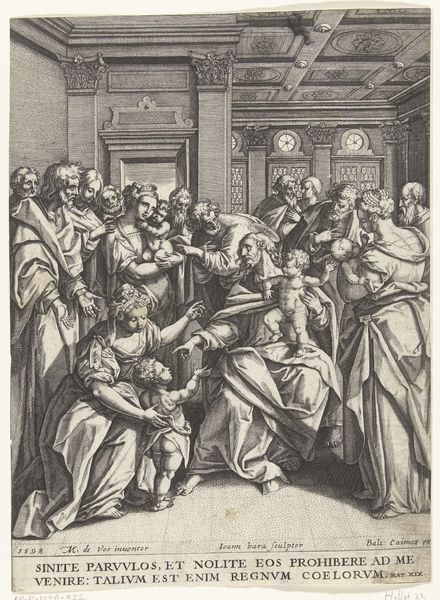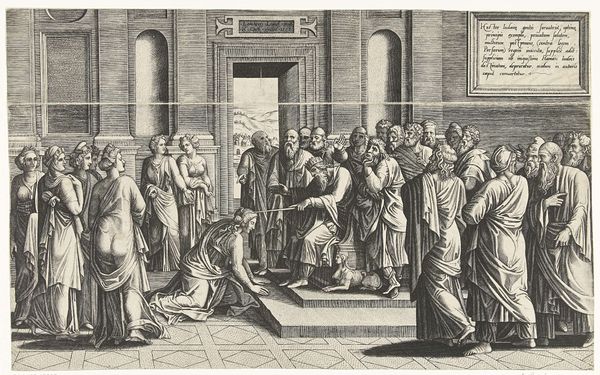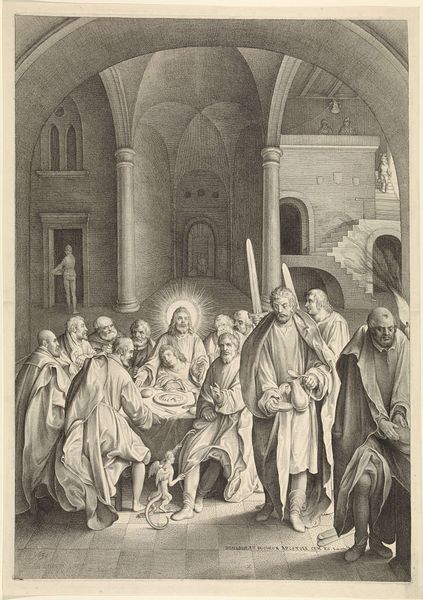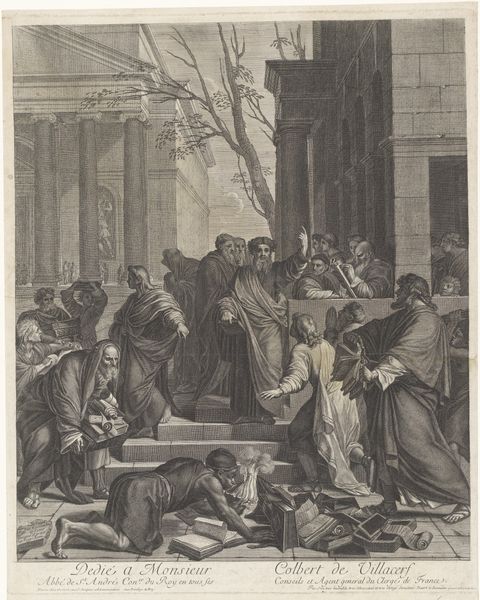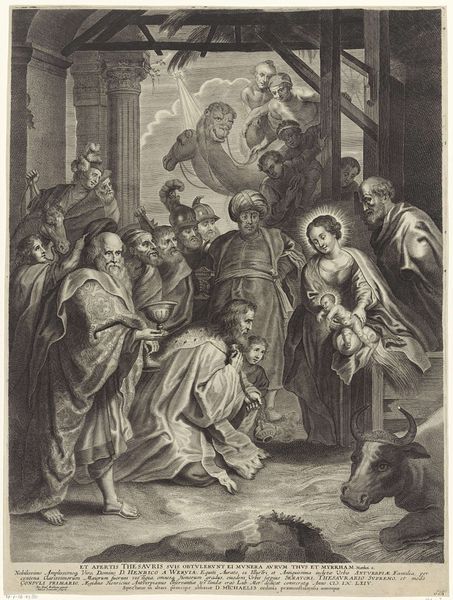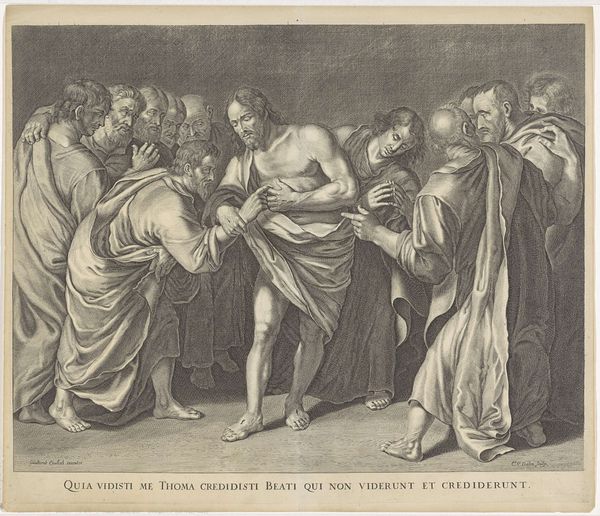
print, engraving
#
narrative-art
#
baroque
# print
#
old engraving style
#
figuration
#
history-painting
#
engraving
Dimensions: height 400 mm, width 510 mm
Copyright: Rijks Museum: Open Domain
Editor: So, this is "Christus en de cijnspenning," or Christ and the Tribute Money, an engraving that was created sometime between 1622 and 1652. It’s currently housed at the Rijksmuseum. What I immediately notice is the incredible detail rendered in the etching technique. What can you tell me about this piece? Curator: Well, I see an engraving produced during a time of intense socio-economic and religious upheaval. What materials did the engraver utilize, and how did the printing process contribute to disseminating these visual narratives? How does the depiction of Christ engaging with coinage speak to broader themes of labor and value? Editor: That's a good point about labor. I see that it is meticulously created, there are a lot of lines. What kind of labor and craft were involved in producing this print? Curator: Absolutely. And considering the socio-political context, we might think about this piece as reflecting anxieties about wealth and power that the church held in society. Does the work appear to advocate for or against those power dynamics? Editor: That’s fascinating, thinking about the message within the material. It seems to me that because it's rendered as a print, it allows the artist to democratize religion for the everyday person. Curator: Precisely! This easily distributed medium challenges assumptions and facilitates discourse between artwork and societal value. It emphasizes that materials can offer tangible insight into complex cultural systems, wouldn’t you agree? Editor: Yes, definitely. Looking at art from a materialist lens definitely opens up new possibilities of understanding the context and significance of art objects.
Comments
No comments
Be the first to comment and join the conversation on the ultimate creative platform.
